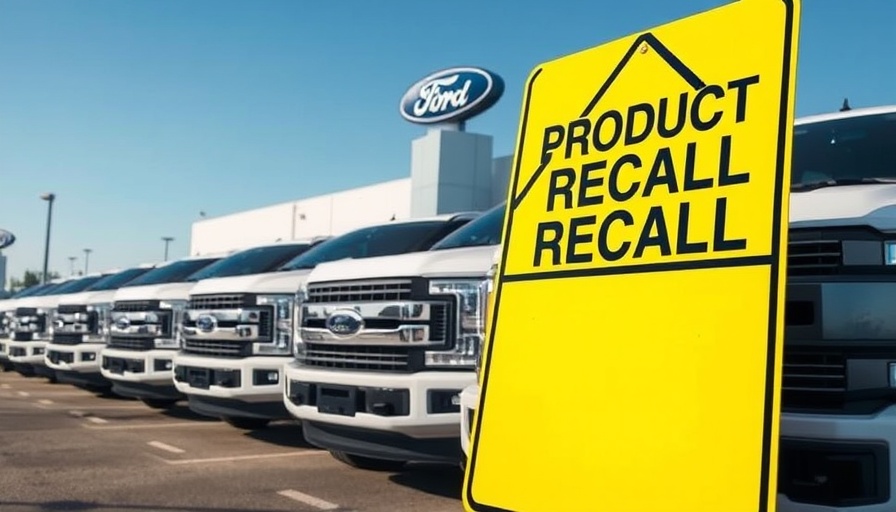
Ford Issues Alarming Recall: What You Need to Know
Ford has issued a crucial "Do Not Drive" warning affecting over 2,300 vehicles due to significant brake defects. The National Highway Traffic Safety Administration (NHTSA) has underscored the potential dangers of these faulty brakes, which could result in life-threatening accidents. This recall captures attention because it highlights a critical issue that every vehicle owner should be well aware of.
Understanding the Brake Defect
The defect stems from the absence of a brake booster pushrod retaining spring in specific models, which leads to a disconnection from the brake pedal, causing a total loss of braking ability. According to the NHTSA, this issue compromises compliance with Federal Motor Vehicle Safety Standards. It's vital to note that a sudden loss of brake function directly increases the risk of a catastrophic crash, making vehicles with this defect exceptionally dangerous to operate.
Vehicles Affected: Are You at Risk?
Included in the recall are the 2025 models of Ford's Super Duty series, comprising the F-550, F-450, F-350, and F-250 trucks. Owners of these vehicles should be vigilant and check their mail for notices from Ford about the recall. If you own one of these models, heed the warning from NHTSA and abstain from driving until the issue is rectified.
Steps Ford Will Take to Resolve the Issue
Ford has stated that they will inspect and repair the brake pedal assembly at no cost to the owner. It's crucial to schedule this repair as soon as possible. The urgency cannot be overstated; operating a vehicle under a “Do Not Drive” order puts not just your life, but also the lives of others on the road at risk. Contact Ford Customer Service at 1-866-436-7332 for assistance, and refer to the specific recall number 25C26 for your query.
Practical Tips for Vehicle Safety
In light of this alarming situation, it's essential for all vehicle owners to stay informed and proactive about recalls. Here are some handyman tips for maintaining vehicle safety:
- Regular Inspections: Conduct regular checks on your vehicle, focusing on essential elements like brakes, tires, and lights.
- Educate Yourself: Stay informed on vehicle news and recalls by checking the NHTSA website or subscribing to car safety alerts.
- Proactive Repairs: If you receive a recall notice, do not delay in scheduling necessary repairs. Quick action is necessary to ensure your safety on the road.
Final Thoughts on Proactive Vehicle Maintenance
Being informed about vehicle safety recalls like Ford's recent "Do Not Drive" order can save lives. Taking preventive steps in vehicle maintenance is not only practical but necessary. By reinforcing your understanding of your vehicle's needs and quickly resolving any issues, you enhance overall safety for yourself and others. Don't disregard these warnings; being proactive and informed can truly make a difference.
If you wish to learn more about vehicle maintenance or have concerns about your vehicle, reach out to your local service center. They can provide you with the necessary guidance and services to keep your vehicle running smoothly and safely.
 Add Row
Add Row  Add
Add 



Write A Comment